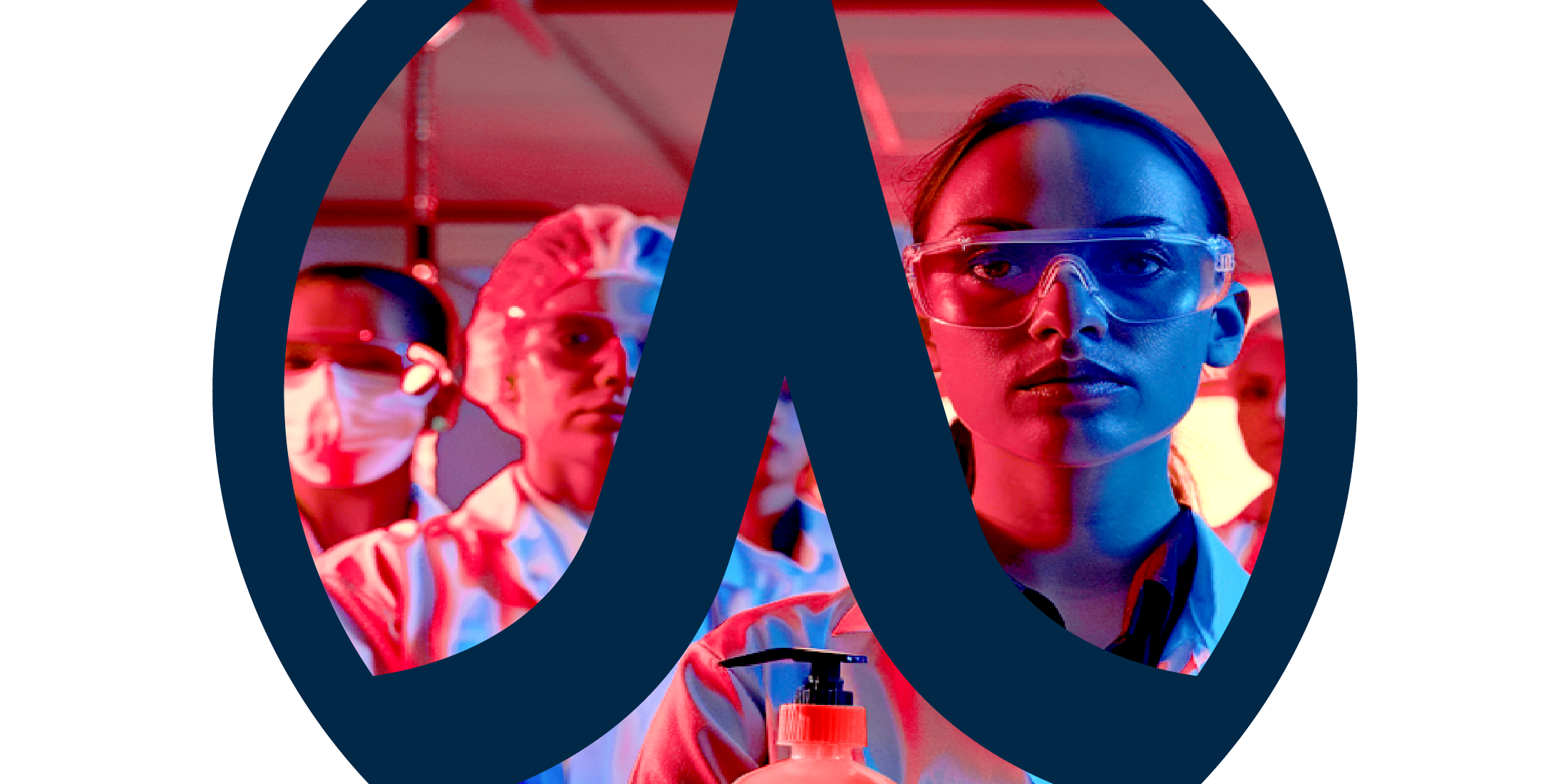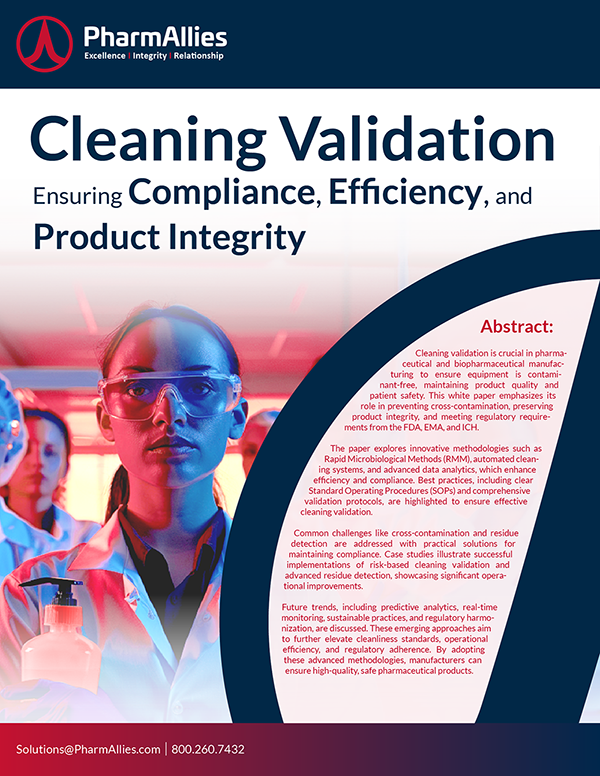Choosing the Right Analytical Methods for Cleaning Validation
Introduction
Selecting the appropriate analytical methods for cleaning validation is critical to ensuring that pharmaceutical and biopharmaceutical manufacturing processes meet the required standards for cleanliness and safety. The accuracy and sensitivity of these methods are critical for detecting and quantifying residues that could impact product quality and patient safety. In this article, I discuss various analytical methods used in cleaning validation, including High-Performance Liquid Chromatography (HPLC), Total Organic Carbon (TOC) analysis, and microbiological testing, and provide guidance on how to validate these methods.
Importance of Analytical Methods in Cleaning Validation
In cleaning validation, analytical methods are crucial for several key reasons.
- Detecting Residues: Ensuring that no harmful residues remain on equipment after cleaning.
- Quantifying Contaminants: Measuring the levels of any remaining contaminants to ensure they are within acceptable limits.
- Regulatory Compliance: Meeting the tight requirements set by regulatory bodies such as the FDA, EMA, and ICH.
- Ensuring Product Quality: Maintaining the integrity and safety of pharmaceutical products.
Key Analytical Methods for Cleaning Validation
High-Performance Liquid Chromatography (HPLC)
HPLC is a widely used analytical technique for detecting and quantifying organic residues, including active pharmaceutical ingredients (APIs) and cleaning agents.
- Principle: HPLC separates components of a mixture based on their interactions with a stationary phase and a mobile phase.
- Applications: Ideal for analyzing complex mixtures and detecting specific organic compounds.
- Advantages: High sensitivity and specificity, which enable it to detect low levels of residues. Additionally, it is suitable for a wide range of compounds, ensuring comprehensive and reliable results across various applications.
- Limitations: It requires skilled operators and has a high cost of equipment and maintenance. These factors may impact its accessibility and practicality for some applications.
Total Organic Carbon (TOC) Analysis
TOC Analysis measures the total amount of organic carbon present in a sample, providing an overall indication of cleanliness.
- Principle: TOC analysis involves oxidizing organic carbon to carbon dioxide, which is then measured.
- Applications: Used for general cleanliness assessment and for detecting organic residues from APIs and cleaning agents.
- Advantages: Broad applicability and ease of use, as it is quick and relatively simple to perform. Additionally, it is effective for detecting a wide range of organic compounds, making it a versatile tool in various applications.
- Limitations: its non-specific nature prevents the identification of individual compounds. As a result, additional methods may be required for specific residue identification.
Microbiological Testing
Microbiological Testing is essential for detecting microbial contamination, particularly in sterile manufacturing environments.
- Principle: Involves culturing microorganisms on nutrient media and counting the colonies formed.
- Applications: Used to ensure that cleaning processes effectively remove microbial contaminants.
- Advantages: Its critical role in ensuring sterility and preventing microbial contamination. Additionally, it can detect a broad range of microorganisms, making it an essential tool for maintaining high standards of cleanliness and safety.
- Limitations: Time-consuming, as cultures can take days to grow. Additionally, it is less precise than chemical methods, which may impact its efficiency and accuracy in some applications.
Other Analytical Methods
Other analytical methods that can be used in cleaning validation include.
- Gas Chromatography (GC): Effective for detecting volatile organic compounds. Principle: GC separates volatile components of a sample based on their interactions with a stationary phase within a column and a mobile phase (carrier gas). Applications: Suitable for analyzing volatile organic compounds and solvents. Advantages: High sensitivity and specificity for volatile compounds. Limitations: Requires sample preparation and skilled operators.
- Atomic Absorption Spectroscopy (AAS): Used for detecting metal residues. Principle: AAS measures the concentration of metal ions by detecting the absorption of light. Applications: Effective for detecting trace metal contamination. Advantages: High sensitivity for metal ions. Limitations: Limited to metallic residues.
- Fourier-Transform Infrared Spectroscopy (FTIR): Useful for identifying specific functional groups in organic compounds. Principle: FTIR measures the absorption of infrared light by the sample, providing a spectrum that indicates functional groups present. Applications: Identifies specific organic compounds and functional groups. Advantages: Rapid and non-destructive analysis. Limitations: Requires specific spectral libraries for identification.
- UV-Visible Spectroscopy: Common for detecting chromophores and other UV-absorbing residues. Principle: UV-Vis spectroscopy measures the absorption of ultraviolet or visible light by the sample. Applications: Suitable for detecting compounds with chromophores. Advantages: Simple and rapid analysis. Limitations: Limited to compounds that absorb in the UV-Vis range.
Steps for Validating Analytical Methods
Step 1: Develop a Validation Protocol
Create a detailed protocol outlining the validation process, including objectives, methods, acceptance criteria, and documentation requirements.
- Objective: Clearly define the purpose of the validation, such as ensuring the method’s reliability for detecting specific residues.
- Methods: Describe the procedures to be used for validation, including sample preparation, analysis, and data collection.
- Acceptance Criteria: Establish criteria that the method must meet to be considered valid, based on regulatory guidelines and scientific principles.
- Documentation: Outline the records to be maintained, including raw data, calculations, and validation reports.
Step 2: Perform Validation Studies
Conduct experiments to evaluate the method based on the parameters mentioned above. Use a statistically significant number of samples to ensure reliability.
- Accuracy: Analyze known standards and compare results to true values.
- Precision: Perform multiple analyses of the same sample under the same conditions (repeatability) and under different conditions (reproducibility).
- Specificity: Test the method with samples containing the analyte and potential interfering substances.
- Linearity: Prepare and analyze samples with varying concentrations of the analyte, plotting the response to verify linearity.
- LOD and LOQ: Determine the lowest concentrations that can be reliably detected and quantified.
- Robustness: Evaluate the method under slightly varied conditions to ensure consistent performance.
- Range: Confirm that the method can accurately measure analyte concentrations within the desired range.
Step 3: Analyze Data
Analyze the data from the validation studies to ensure that the method meets the predefined acceptance criteria.
- Statistical Analysis: Use statistical tools to evaluate the accuracy, precision, linearity, and other parameters.
- Comparison to Criteria: Compare the results to the established acceptance criteria to determine if the method is valid.
Step 4: Document Results
Document the validation process, including the protocol, raw data, analysis, and conclusions. Ensure that records are comprehensive and accessible for regulatory inspections.
- Validation Report: Prepare a detailed report summarizing the validation process, results, and conclusions.
- Raw Data: Maintain organized records of all raw data generated during validation studies.
- Supporting Documents: Include references to relevant scientific literature and regulatory guidelines.
Step 5: Review and Approve
Have the validation results reviewed and approved by the appropriate quality assurance personnel?
- Quality Assurance Review: Ensure that all aspects of the validation process have been thoroughly reviewed and meet regulatory standards.
- Approval: Obtain formal approval from quality assurance or regulatory affairs to confirm the method’s validity.
Best Practices for Analytical Method Validation
Engage Multidisciplinary Teams
Involve experts from different fields, including analytical chemistry, quality assurance, and toxicology, to ensure a thorough validation process. Leverage the knowledge and experience of professionals from various disciplines to address all aspects of method validation. Foster collaboration among team members to ensure comprehensive and accurate validation.
Follow Regulatory Guidelines
Adhere to guidelines from regulatory bodies like the FDA, EMA, and ICH to ensure compliance and acceptance during inspections. Ensure that validation protocols and procedures align with current regulatory requirements. Follow established guidelines for method validation, such as ICH Q2(R1) for analytical method validation.
Continuous Monitoring
Implement continuous monitoring of validated methods to ensure they remain accurate and reliable over time. Revalidate methods periodically or when significant changes are made. Regularly check the performance of validated methods to detect any deviations or issues. Schedule revalidation at regular intervals or when there are changes to the equipment, reagents, or analytical procedures. Use trend analysis and other tools to monitor the ongoing performance of validated methods.
Training and Competency
Ensure that all personnel involved in the validation and use of analytical methods are adequately trained and competent. Develop and implement training programs to ensure that personnel are knowledgeable about the methods and validation procedures. Regularly assess the competency of personnel to ensure they can perform the methods accurately and reliably.
Conclusion
Choosing the right analytical methods for cleaning validation is crucial for ensuring that pharmaceutical manufacturing processes meet the highest standards of cleanliness and safety. Methods like HPLC, TOC analysis, and microbiological testing play vital roles in detecting and quantifying residues. Validating these methods for accuracy, precision, specificity, and other parameters ensures their reliability and compliance with regulatory requirements. By following a systematic approach to method validation and adhering to best practices, manufacturers can maintain product quality and protect patient health. Through diligent validation and continuous monitoring, pharmaceutical companies can ensure that their cleaning processes consistently meet the required standards, thereby safeguarding both product integrity and patient safety.



